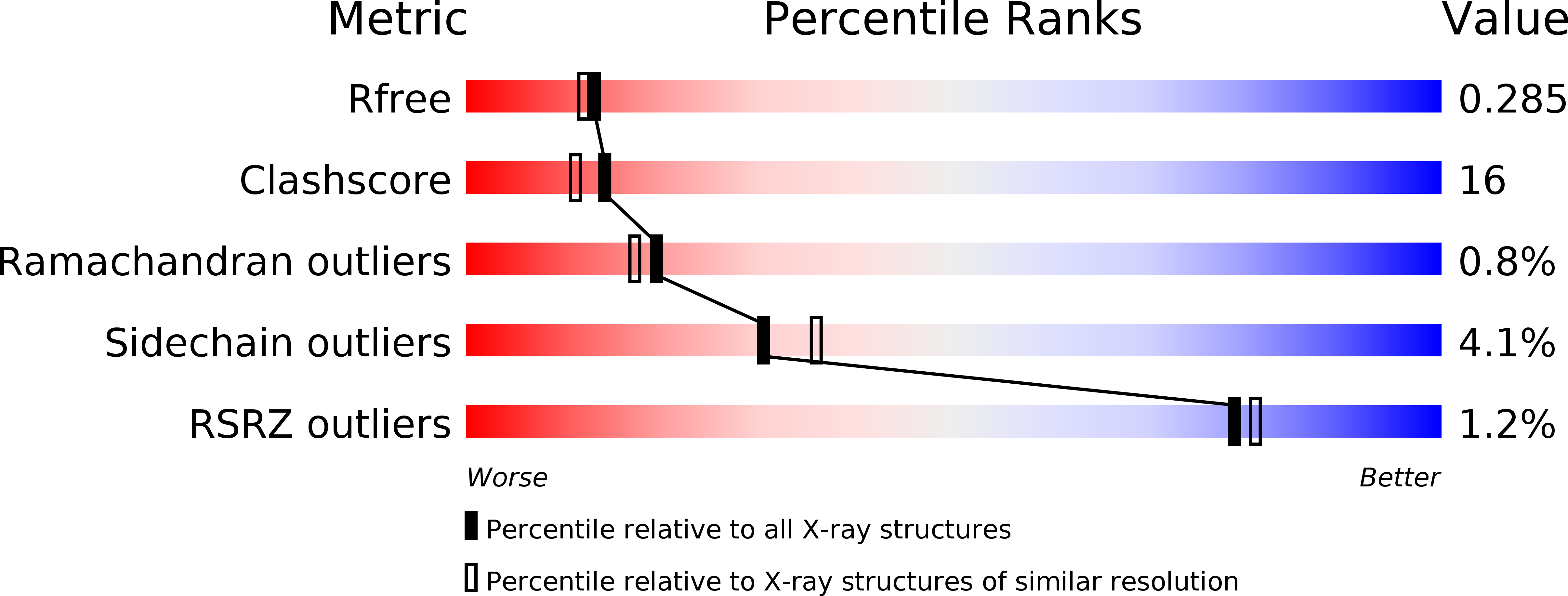
Deposition Date
2007-04-05
Release Date
2007-05-22
Last Version Date
2024-02-21
Entry Detail
PDB ID:
2PFT
Keywords:
Title:
The Crystal Structure of Mouse Exo70 Reveals Unique Features of the Mammalian Exocyst
Biological Source:
Source Organism:
Mus musculus (Taxon ID: 10090)
Host Organism:
Method Details:
Experimental Method:
Resolution:
2.25 Å
R-Value Free:
0.28
R-Value Work:
0.23
Space Group:
P 32 2 1


